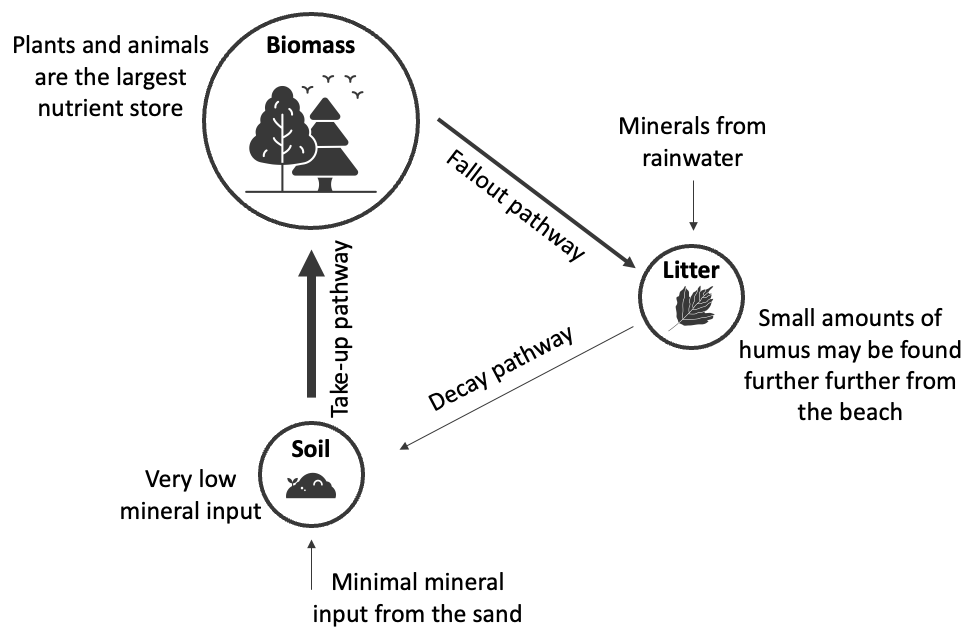Abiotic and biotic characteristics of sand dunes
Every ecosystem consists of biotic (living) and abiotic (non-living) elements. This includes sand dunes, which generally demonstrate similar biotic and abiotic changes despite differing in specific characteristics as their proximity to the sea changes.
Within sand dunes, three primary food chains are often observed:
- A grazing pathway, primarily involving insects, mammals, and fruit and seed-consuming birds.
- A detritus (or litter) pathway, primarily consisting of insects that feed on vegetative detritus.
- Subsurface organisms that feed on buried detritus.
In these ecosystems, only a small percentage of the primary production is directly grazed by herbivores. Around 30% of plant biomass and 3% of detritus in sand dune ecosystems are found above ground. The larger trees and shrubs towards the rear of the dune contribute significantly to the total biomass, leading to higher dunes biomass than ocean ecosystems.
Nutrient cycling is another crucial aspect of sand dune ecosystems. The small scale of most dunes and their proximity to both sea and land result in significant material exchanges. Animals migrate across these boundaries for food and shelter, and food chains often originate from the sea. For instance, kelp can wash ashore and become food for dune animals. Some predators, like foxes, owls, and gulls, may move from inland areas to the dunes for feeding.
The nutrient cycle within dunes indicates:
- Nutrient inputs from rainwater and sand weathering are limited.
- Biomass serves as the largest nutrient store in sand dunes.
- Litter stores are limited, as biomass produces minimal litter.
- Decay pathways are minimal due to dry conditions, and lower pH reduces decomposer activity.
- The soil store is low as water readily filters through the sand, removing nutrients.
- Soil nutrient absorption peaks in the summer when plants are growing.

